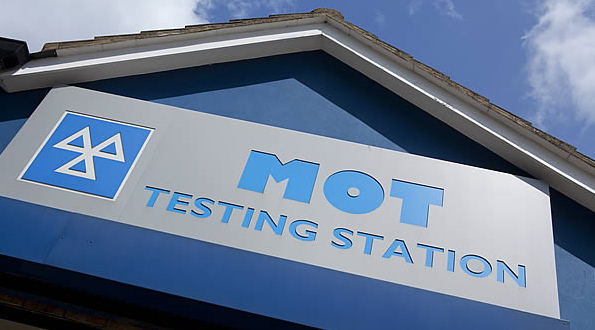Motorists have put their support firmly behind keeping the first MoT test for cars at three years.
Results of a YouGov survey for the Society of Motor Manufacturers and Traders (SMMT) out today, reveal that when told about government plans to change the date of a car’s first MoT, more than three quarters (76%) of car owners said the test should continue to take place when the vehicle is three years old.
Currently, all cars in the UK must undergo an MoT test when they reach three years old, and then annually thereafter, but the Government is proposing to delay the date of the first test for 12 months to when the car is four years old.
It argues this would save motorists £100 million a year, or £45 over the vehicle’s lifetime.1
However, 83% of car owners showed resistance to the idea, saying that £45 – the typical MoT test fee2 – is worth the peace of mind their car is safe, roadworthy and legal.
More than two thirds (68%) also expressed concern that delaying the car’s first MoT could put themselves and other road users in danger and the industry shares this concern.
In its consultation, the government suggests new technology in cars such as tyre pressure monitoring systems, lane departure warning or wet weather tyre performance, is making cars safer.
However, while such systems may help prevent or mitigate accidents, they do not change the fundamental underlying operation of wear and tear products such as tyres and brakes, which continue to require regular checks and maintenance.
17% of all cars taking their first MoT at three years do not meet minimum safety requirements.
Postponing the first MoT for a further 12 months could, therefore, result in almost half a million more cars in unfit condition driving freely and unchecked on UK roads.3
Mike Hawes, SMMT chief executive, said, “The MoT is an essential check on the safety and roadworthiness of vehicles. Extending the first test for cars from three to four years is not what consumers or industry want given the serious risk posed to road safety and vehicles’ environmental performance.
“The latest vehicles are equipped with advanced safety systems but it is still critical that wear and tear items such as tyres and brakes are checked regularly and replaced.
“We urge the Government to scrap its plans to change a test system that has played a vital role in making the UK's roads among the safest in the world."
The most common reasons for three-year-old cars failing the test include essential lights and indicators, tyres, brakes and suspension, and the MOT is a critical intervention that ensures worn components are replaced before the car is allowed back onto the road.4
A recent tyre industry investigation found that more than a quarter (27.3%) of car tyres checked were below the legal minimum tread depth of 1.6mm.
In addition, 70.4% of the tyres examined were worn below the recommended 2mm minimum and would be unlikely to last another year before reaching the legal minimum through typical use.5
Car tyres should be checked at least once a month, however, more than half (56%) of car owners responding to SMMT’s survey said they didn’t examine their tyres as frequently, with one in five (18%) checking them just once a year or less, or not at all.
The SMMT says safety should come ahead of deregulation, cost saving or convenience, and in fact, it wants the test to go further.
It is calling for additional checks such as allowing diesel particulate filters to be properly tested; introducing vehicle safety recall checks to remind motorists of outstanding recall work and ensure it is carried out; tightening the check on mileage to aid the fight against clocking; and ensuring the test and testing stations are sufficiently equipped for checking emerging technologies such as automated safety systems.
1. DfT consultation, January 2017: MoT – Extending the date of the first MoT test from three years to four years www.gov.uk/government/uploads/system/uploads/attachment_data/file/603569/extending-the-period-of-the-first-MOT-from-3-to-4-years.pdf
2. The maximum MoT test fee for a car in the UK is £54.85. However, authorised test stations often charge much less than this. In its consultation, DfT bases its calculations on a typical fee of £45. www.gov.uk/getting-an-mot/mot-test-fees
3. Calculation based on DVSA data published in the DfT’s MoT consultation (above), and SMMT new car registrations data 2014.
4. Top five reasons for initial failure of Class 4 vehicles around age three, tested in 2015: Lamps, reflectors and electrical equipment (143,413); tyres (85,720), driver’s view of the road (73,883), brakes (47,138), suspension (24,628) – DVSA data published in DfT’s MoT consultation (see above)
5. UK-wide survey of 340,000 tyres conducted by TyreSafe in partnership with Highways England in 2016 www.tyresafe.org/media-centre/latest-news/uk-wide-survey-340000-tyres-reveals-10-million-vehicles-driven-illegal-tyre-2016/
6. Department for Transport MoT Scheme Evidence Base, December 2008 http://webarchive.nationalarchives.gov.uk/+/http:/www.dft.gov.uk/pgr/roads/vehicles/mot/mot

















Login to comment
Comments
No comments have been made yet.